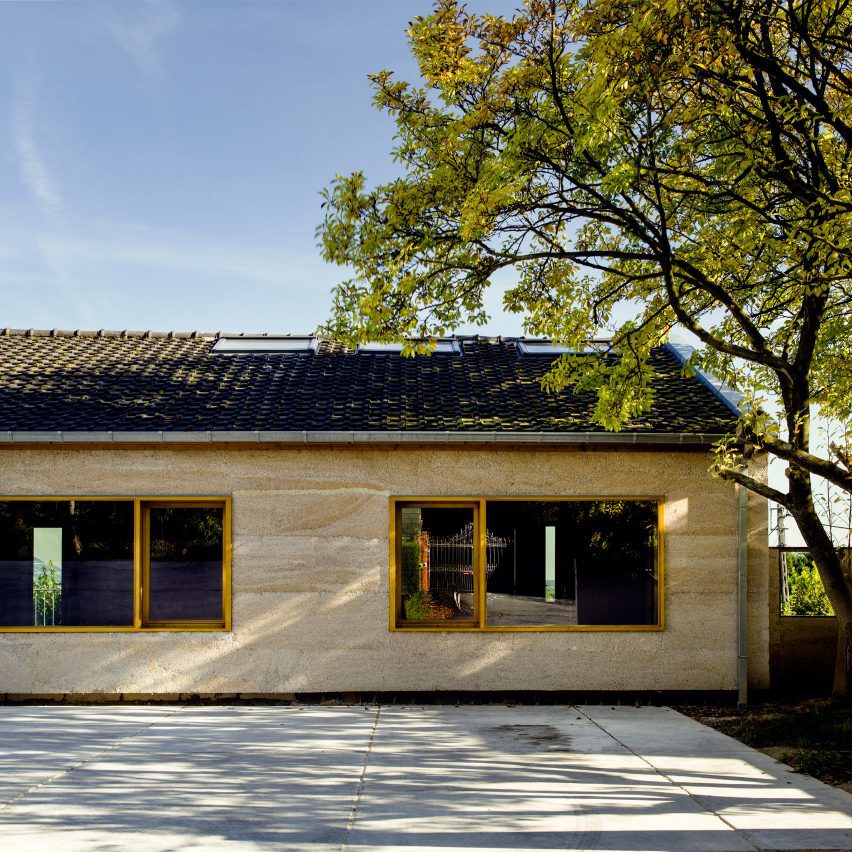“By harnessing the versatility and benefits of hemp, the architecture industry can pave the way toward a greener future in which the built environment harmoniously coexists with the natural world.” [Arch Daily]
.
Why aren’t we using more ‘naturally-grown’ building materials?
Interest in biomaterials including timber, hemp, cork and mycelium has surged recently as architects explore ways of reducing the embodied carbon of their projects. Several countries and cities have introduced legislation to encourage the use of biomaterials. Natural materials must now make up at least half of all the raw materials used in new public buildings in France. In New York, the city council has just approved the use of mass timber for the construction of buildings of up to 85 feet (25.9 metres) tall. Building in wood: building in low-carbon building materials – Vision Group for Sidmouth
Yes, the ideal material is hemp:
Film director-turned-hemp farmer Steve Barron commissioned Practice Architecture to help him ‘grow’ a prototype house using his own crop... Hemp is fast-growing and better than commercial forestry at sequestering carbon – and its long tap roots help to regenerate the soil. Beyond the relatively light processing and transportation emissions, the materials can be understood to be carbon-neutral (or carbon-negative if you count the sequestration), which is a vast improvement on steel, concrete, or petrol-based insulations. Grow your own house – Vision Group for Sidmouth
A ‘revolution’ seems to be happening – as reported in the latest Arch Daily:
In recent years, the spotlight on sustainable, eco-friendly, and low-carbon materials has intensified across the architecture industry. Amid this interest, a renaissance of hemp architecture is gradually gaining momentum on a global scale. Hemp-based materials have emerged as a favorable alternative to traditional industrialized materials, presenting a multitude of benefits that could revolutionize the construction industry...

In the field of sustainable building materials, hemp has emerged as a powerful contender. Renowned for its eco-friendly nature, hemp stands as a renewable and biodegradable resource that is widely available through cultivation. Its insulation and acoustic properties, coupled with its ability to regulate humidity levels, make it an ideal choice for construction projects. Hempcrete is resistant to pests, rot, and mold; and actively absorbs and stores carbon dioxide in the atmosphere. Hemp bricks provide stability and impressive acoustic insulation, while their ionizing effect allows for the removal of fine dust, fungi, and bacteria from the surrounding air. With non-toxic properties, hemp-based materials promote healthier indoor environments...
As research and development efforts continue, the expansion of hemp-based construction product offerings is pushing the built environment toward a more sustainable form. Embracing biomaterials, such as hemp, that are locally sourced, non-toxic, and have minimal ecological impact is essential for the future of the construction industry. By harnessing the versatility and benefits of hemp, the architecture industry can pave the way toward a greener future in which the built environment harmoniously coexists with the natural world.